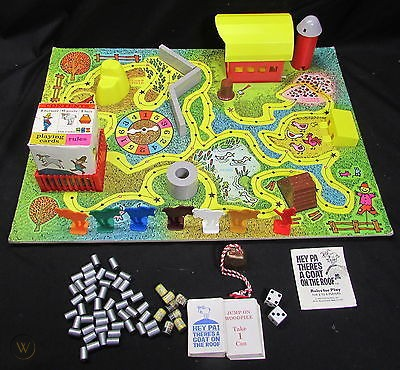I thought a fun way for my son and I to learn and improve our python programming skills respectively is to digitize one of his (and my and my mom's when we were his age) favorite board games, "Hey Pa! There's a goat on the roof". When I suggested the idea, I didn't remember that the game board had three branching paths that connect and diverge in different ways and now I am flummoxed on how to store the board position for the players logically.
Ultimately, you're trying to get from the goat pen on the left to the barn in the upper right. There's "power up" cards that can warp you around the board to the haystack / flower bed / wood pile / etc, so each position needs to be numbered. Since there's an uneven number of spaces in the three tracks, and the top and middle one meet at two different points, I didn't think an array would work. I couldn't wrap my head around how to use consecutive integers cleanly.
What are your thoughts on how we can make this work?

